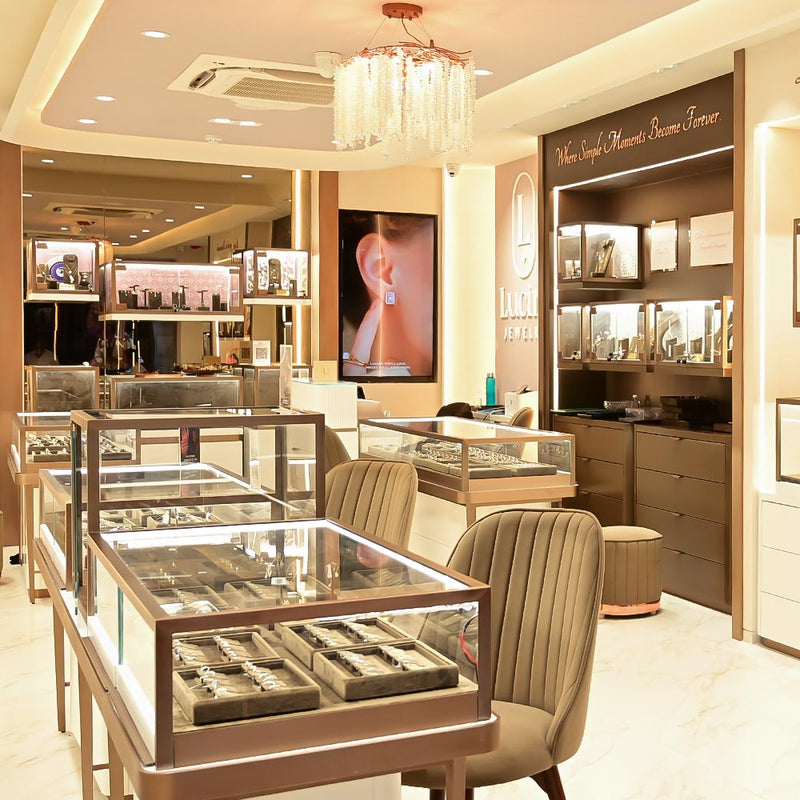Two Journeys. One Diamond.

The Beginning of a Diamond:
A tiny fragment of an existing diamond, called a seed, is carefully chosen. This seed acts as the foundation on which a new diamond crystal begins to grow.

Born Beneath the Earth:
Over 1 - 3 billion years ago, deep within Earth’s mantle, immense heat (over 1,200°C) and crushing pressure transformed pure carbon into diamond crystals, a rare geological process that took ages to complete.

Building the Right Environment:
HPHT uses intense heat (~1,500°C) and pressure while CVD uses a plasma chamber filled with carbon-rich gas that deposits carbon atoms onto the seed

Journey to the Surface:
Volcanic eruptions carried these hidden crystals upward through vertical tunnels called kimberlite pipes, bringing them closer to the Earth’s surface for the first time.

Layer by Layer Growth:
Carbon atoms attach to the seed one layer at a time, slowly forming the diamond crystal. The process can take several weeks or months, depending on the desired size.

Extraction of Ore
To extract diamonds, massive volumes of earth, gravel, and rock are dug up, sometimes up to 250 tons for just 1 carat. This process demands significant water, fuel, and energy resources.

Crystal Formation:
Every stage is closely monitored for temperature, pressure and gas purity. This ensures the diamond grows evenly, with exceptional clarity and minimal impurities

Sorting from Stone
The mined ore is crushed, washed, and filtered using techniques like dense media separation (using differences in weight) and X-ray fluorescence to isolate diamonds from the waste material

Cutting & Polishing:
Once fully grown, the rough diamond is cut using advanced lasers and then hand-polished by expert craftsmen to reveal its brilliance and final shape.

Cutting & Polishing
Once recovered, rough diamonds are graded, cut and polished by master craftsmen to reveal their brilliance. Each stone is then certified before making its way to jewelers worldwide.

Certification & Grading:
Each diamond is graded by independent laboratories such as GIA, IGI or SGL, ensuring authenticity and excellence across the 4Cs - Cut, Color, Clarity, and Carat


Certification & Grading
Graded by independent labs like GIA, IGI or SGL, mined diamonds are graded on the same 4Cs with well-cut, clear, colorless stones prized highest.
What Sets Them Apart
LAB GROWN DIAMONDS
Price & Affordability - Usually 40–70% cheaper than mined diamonds, letting buyers get a larger or higher-quality stone in the same budget due to lower production costs and fewer middlemen.
Ethical & Conflict-Free - Created in safe, controlled labs, lab grown diamonds have no links to conflict or unethical mining. You get complete peace of mind with transparent and traceable origins.c
Quality & Purity - Formed under precise lab conditions, these diamonds often have fewer flaws and higher clarity. They can also be made in rare colors like pink, blue, and yellow with perfect consistency.
Scientific Traceability - Every lab grown diamond can be traced back to its source lab, ensuring full transparency.

MINED DIAMONDS
Environmental Impact - Mining 1 carat of diamond can require moving 100 - 250 tons of earth and consumes huge amounts of water and fossil fuels, generating significant waste and carbon emissions.
Ethical & Human Rights Issues - “Blood or conflict diamonds” have historically funded wars. Even today, unethical labor practices, poor safety conditions and exploitation of workers remain issues in certain regions.
Limited Design Options - Natural diamonds are rare and fixed in size, color and clarity, limiting choice and making customization nearly impossible.
Complex Supply Chain - Multiple intermediaries like miners, traders, cutters and retailers inflate costs and make it harder to trace a diamond’s origin.




